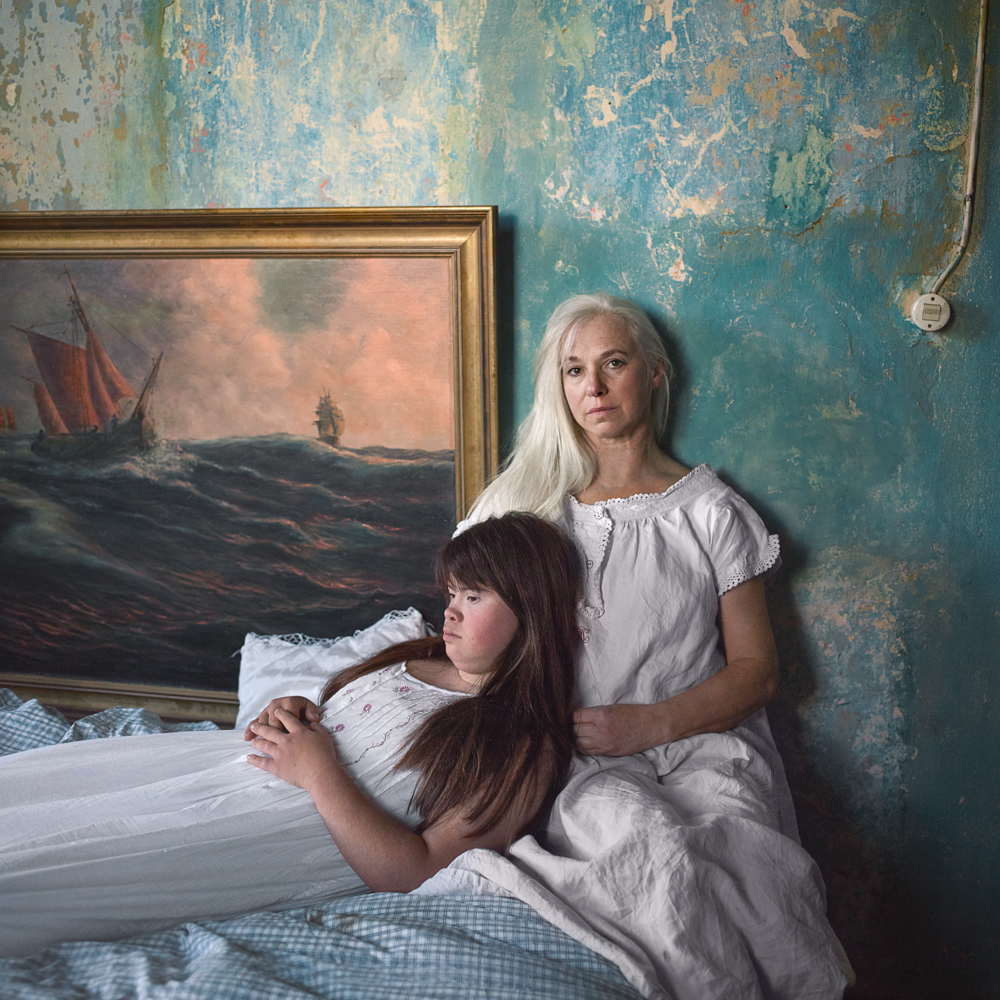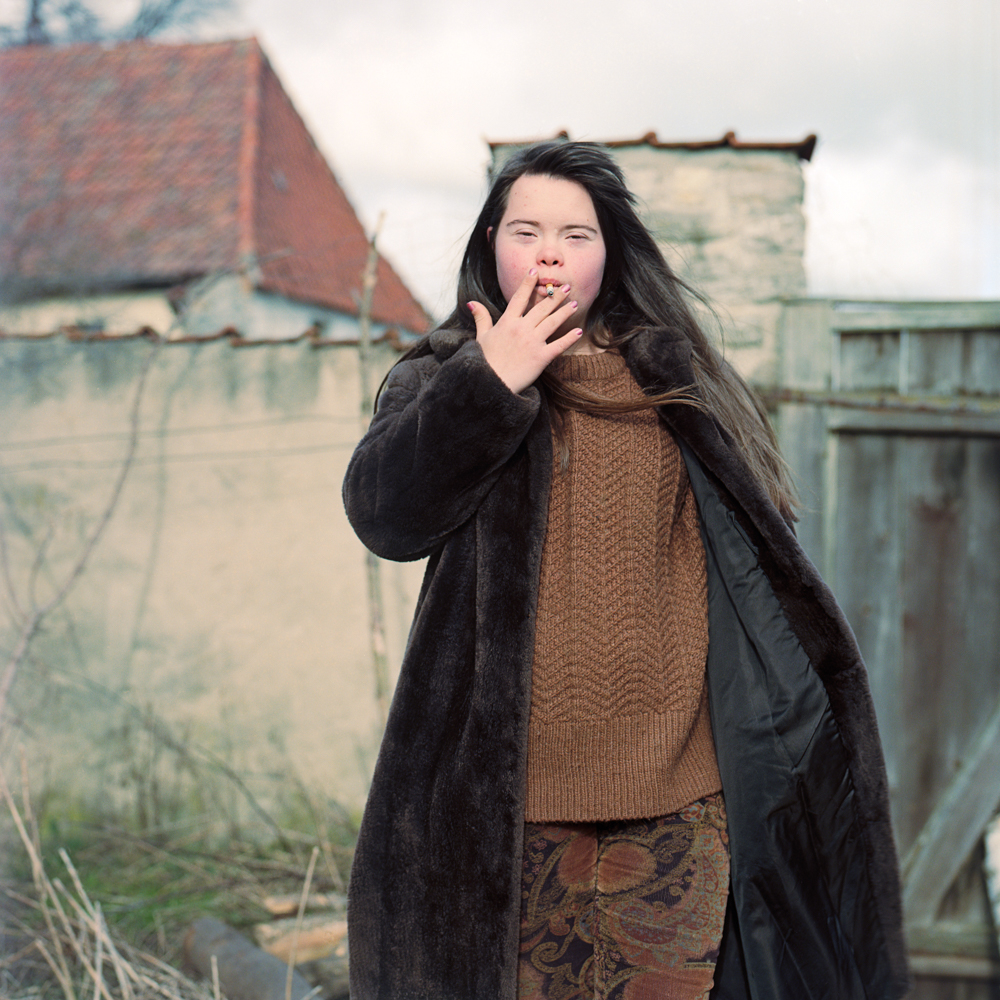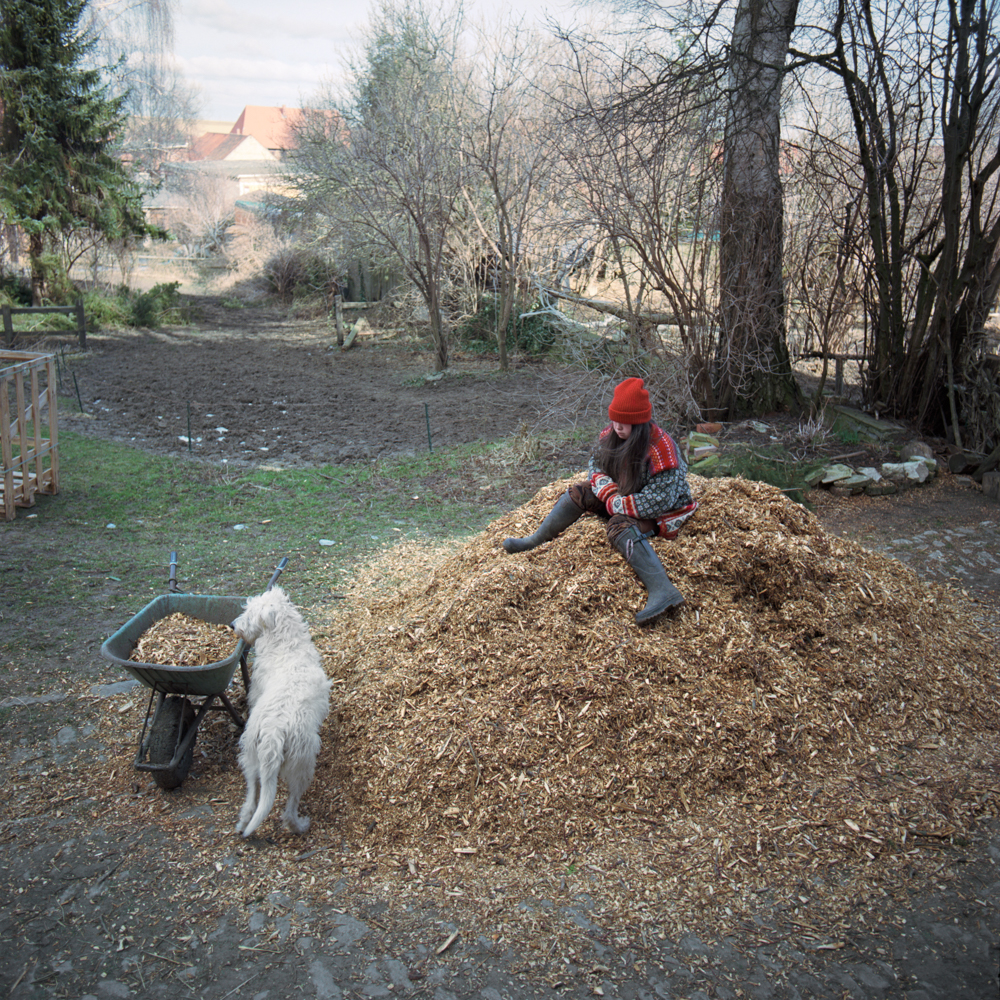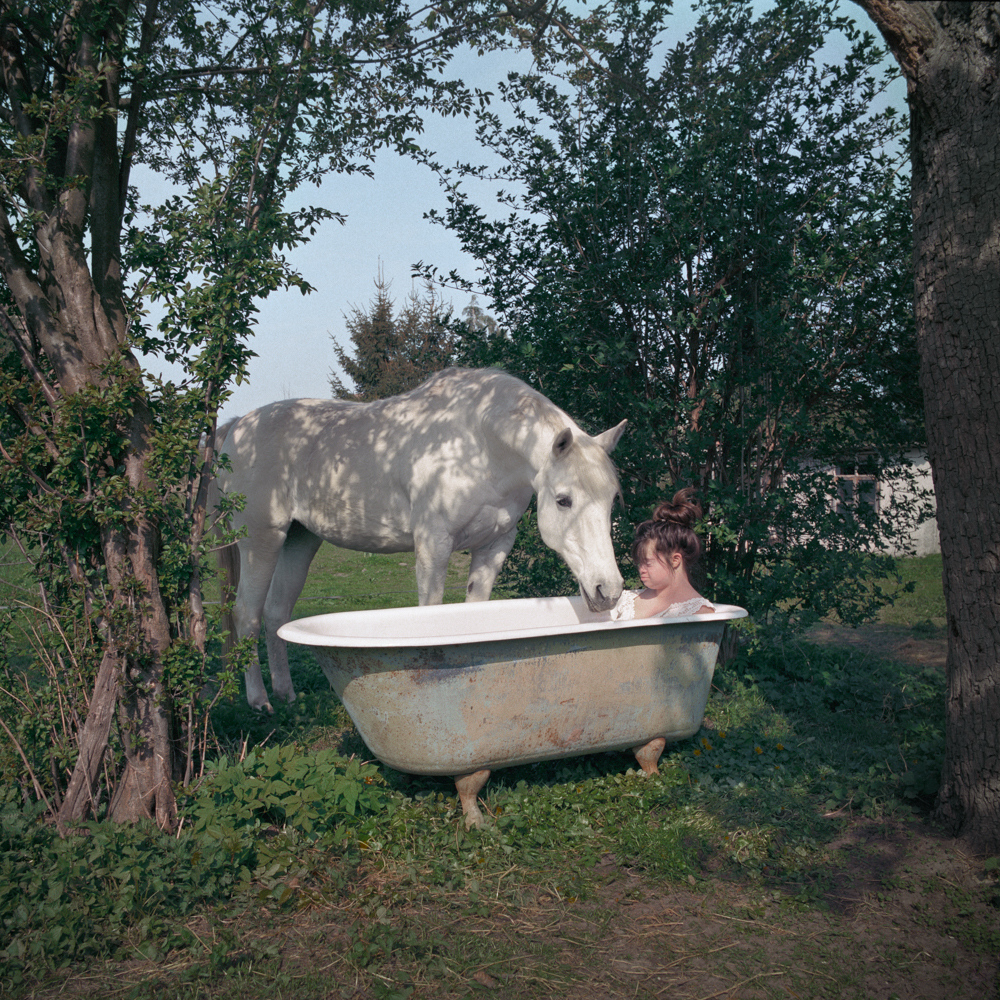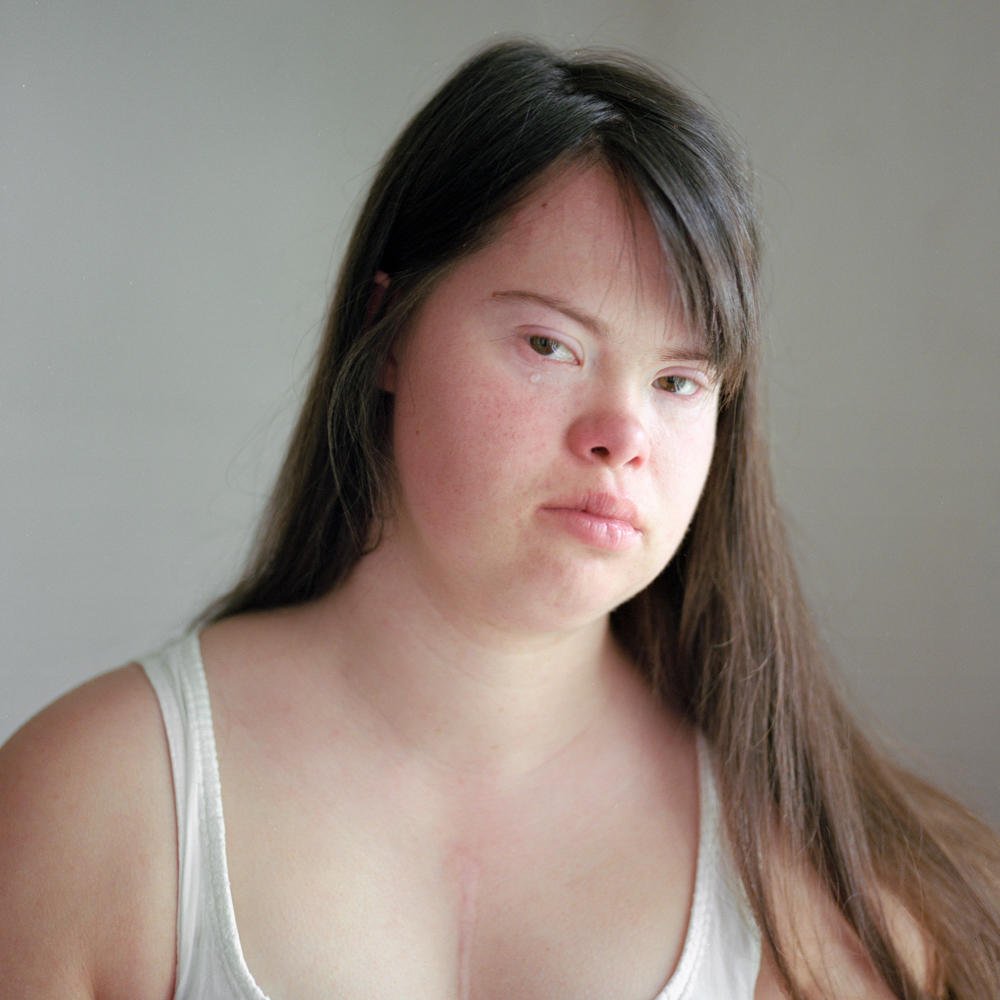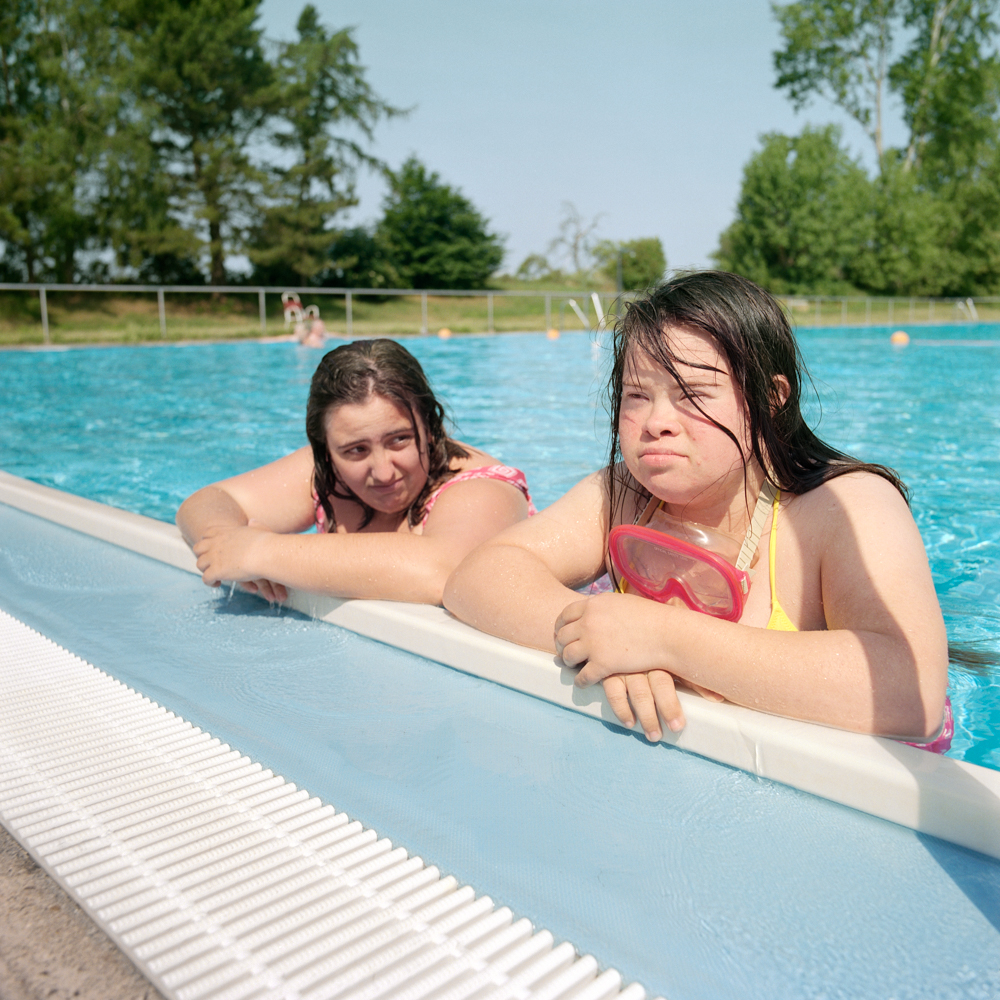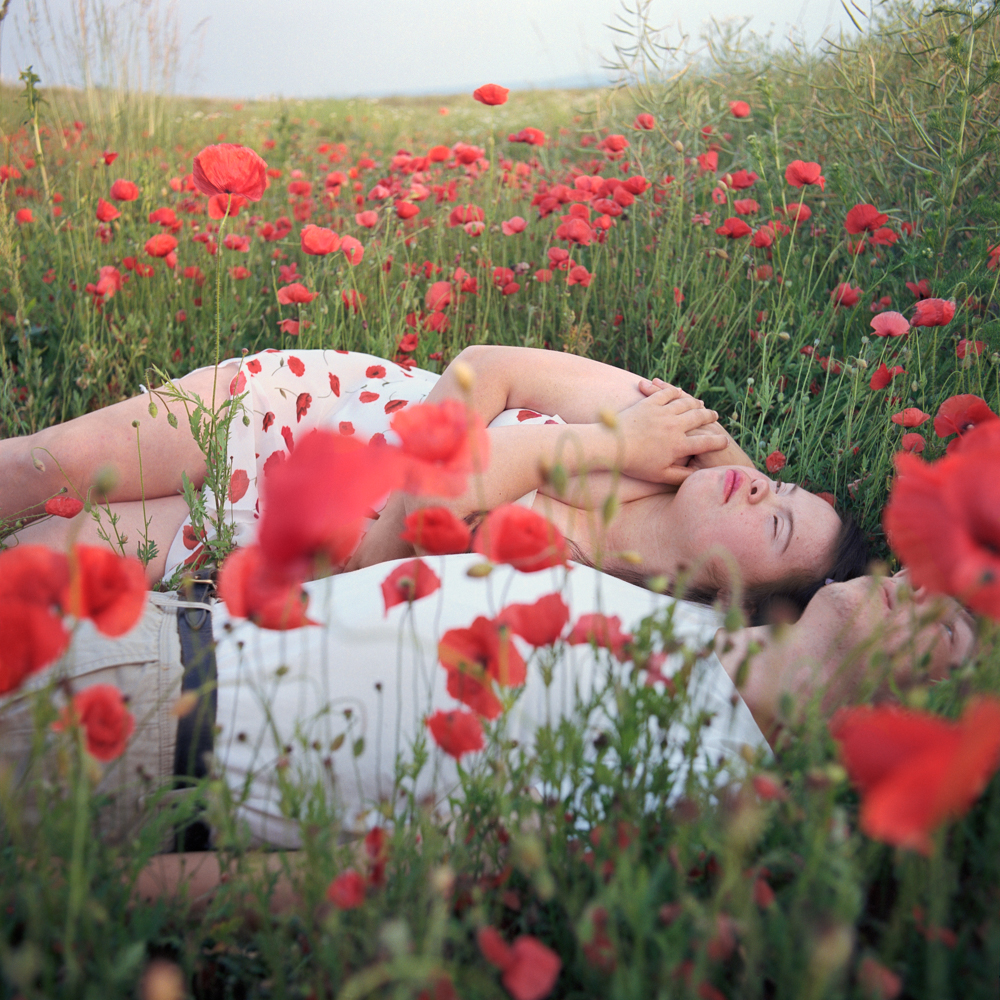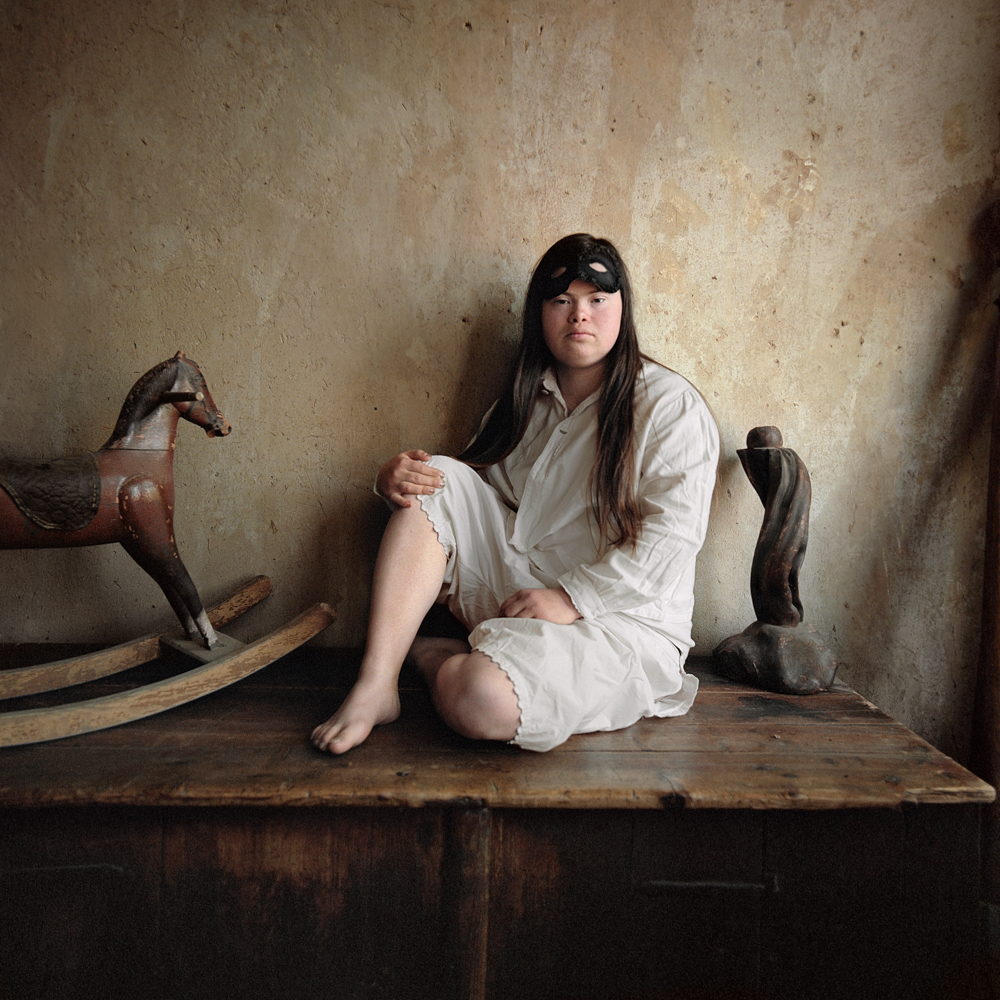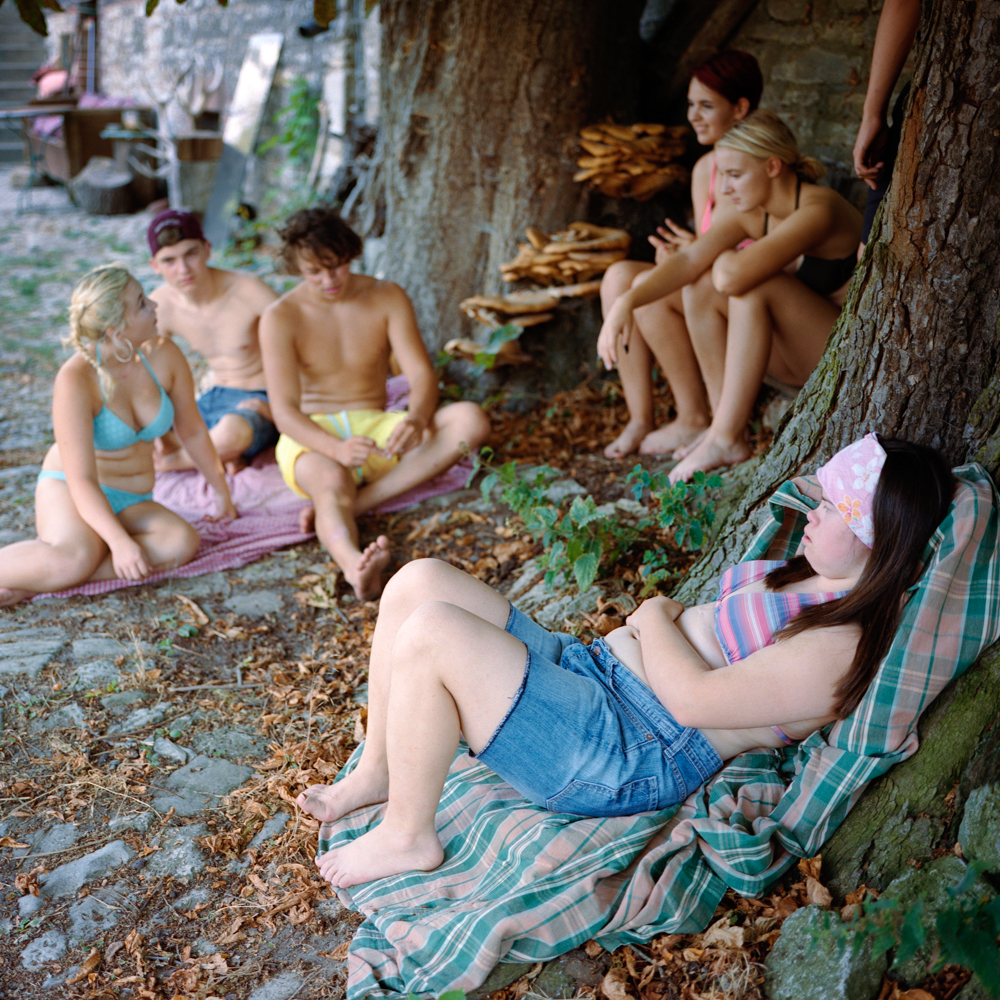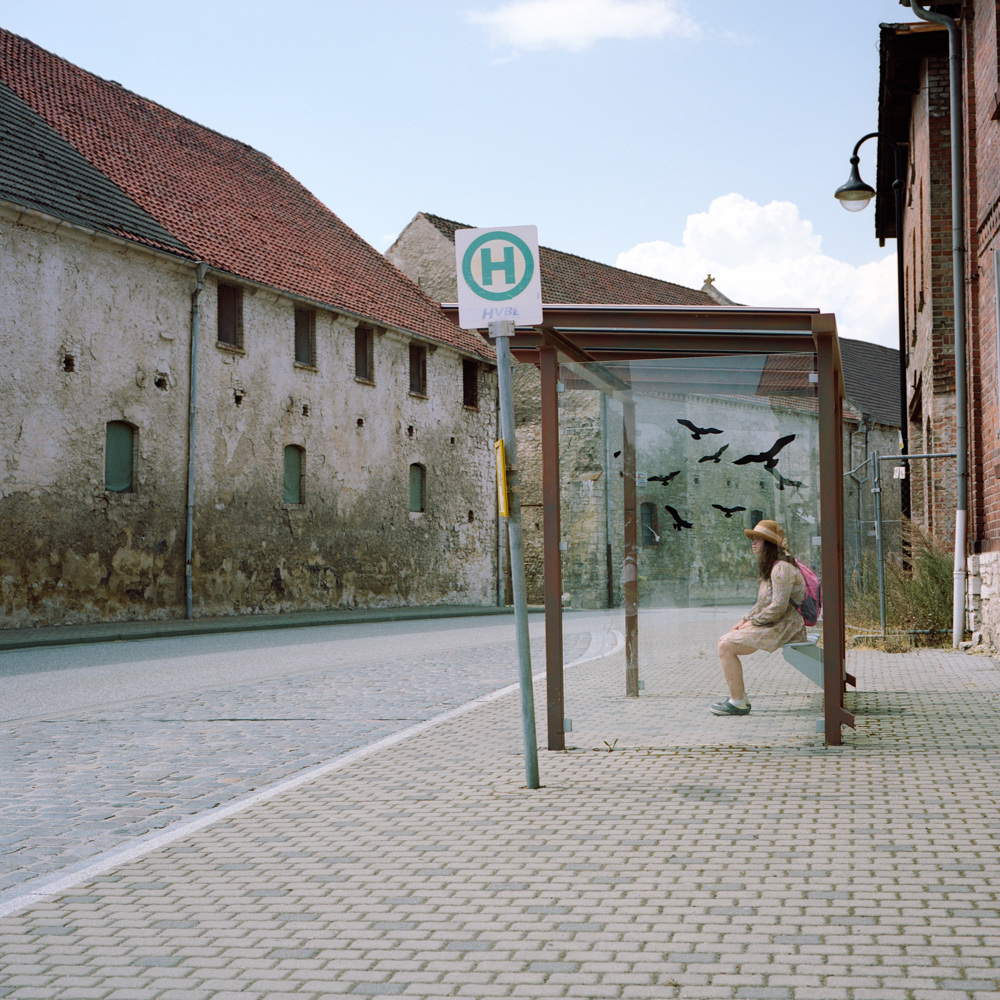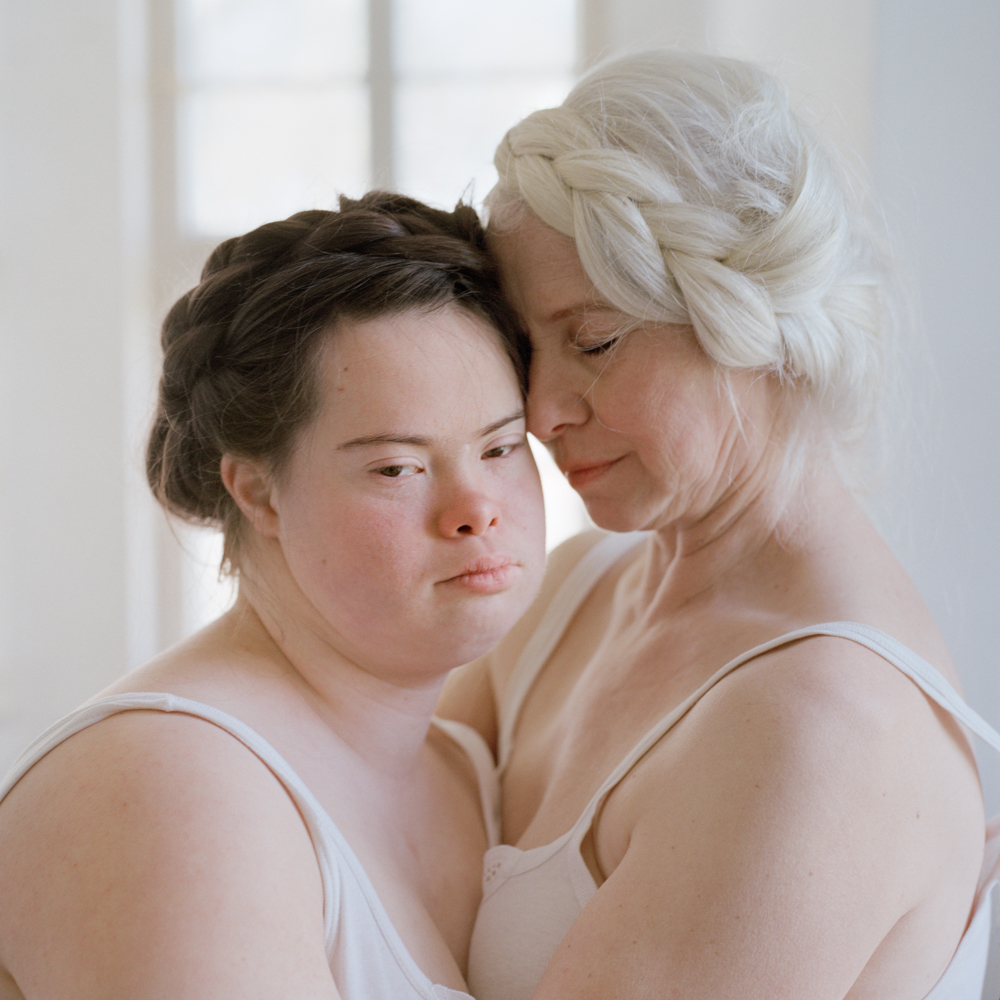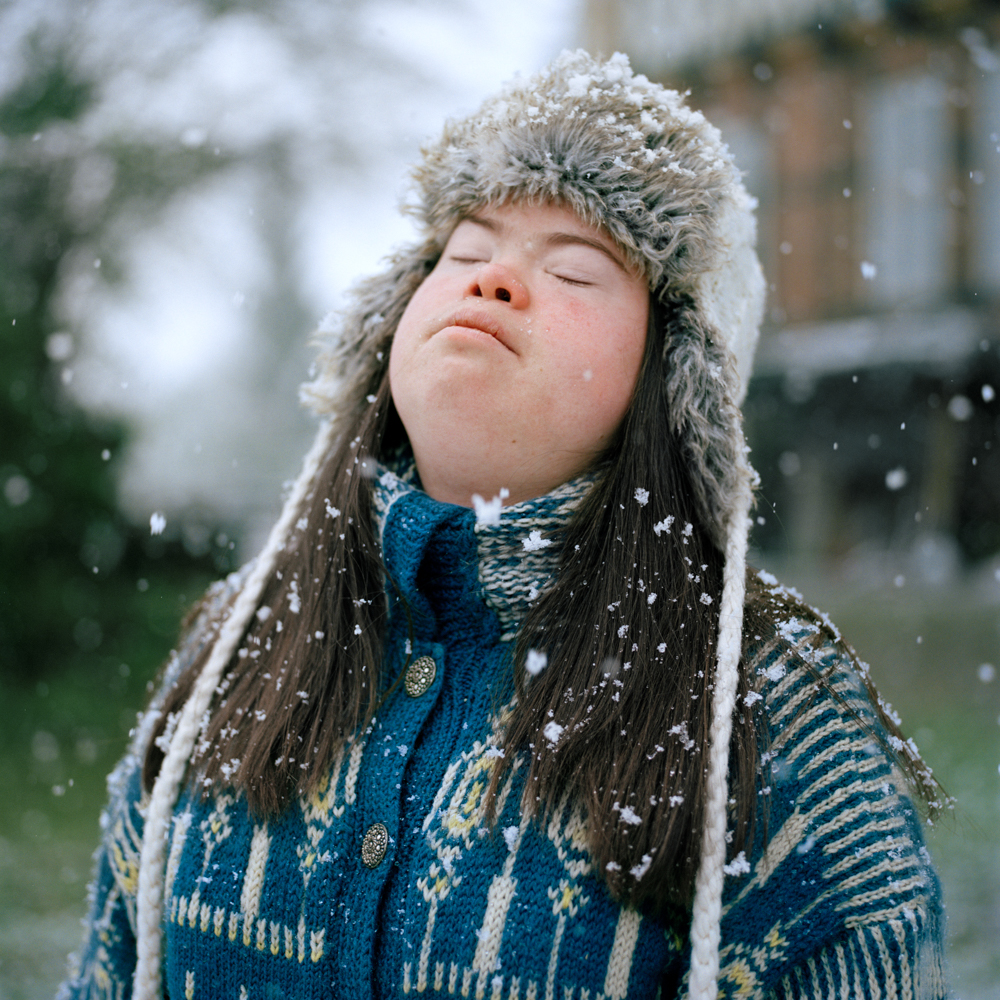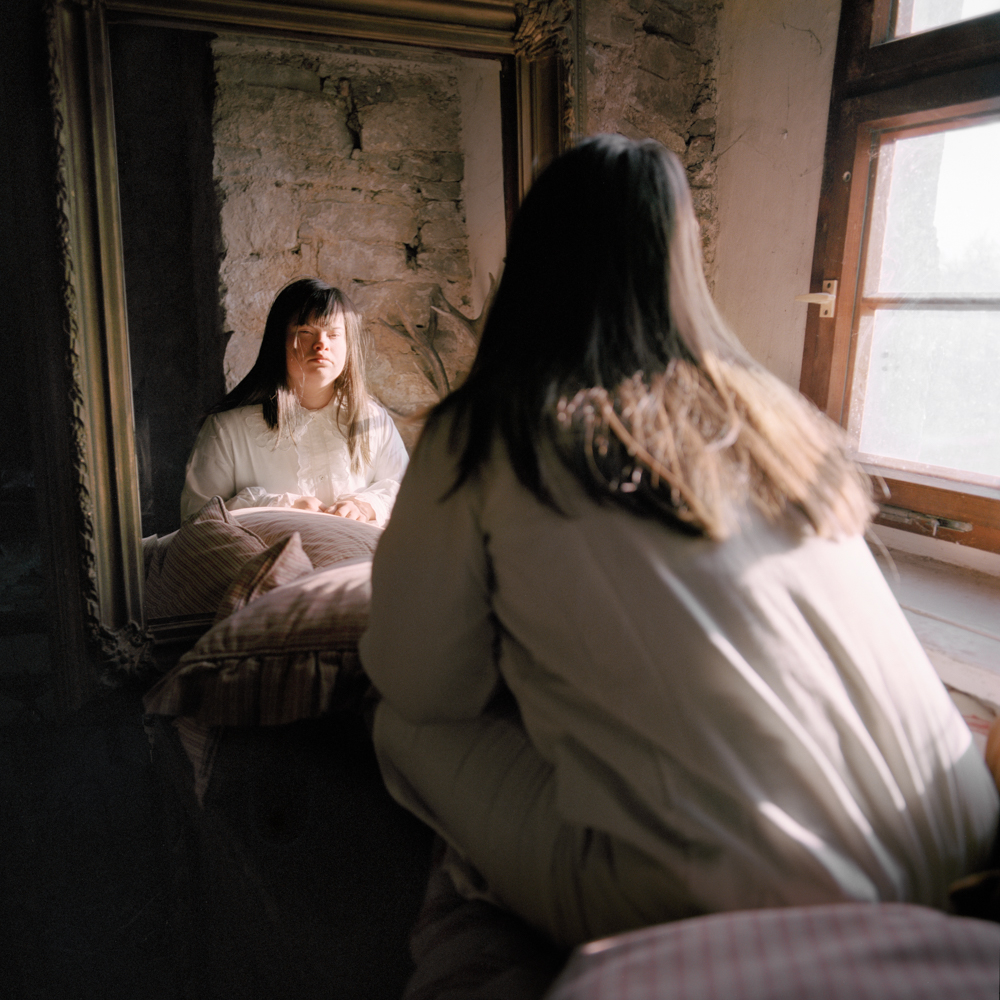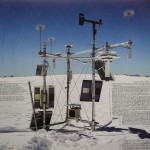Snezhana von Büdingen: Storytellers
The photography project is a process of endless unfolding. Engaging in a cohesive body of images inevitably unearths ideas far beyond the original spark and allows for the possibility of new nodes to form and take on a life of their own. It was in this way that Cologne, Germany, based photographer Snezhana von Büdingen began her series Meeting Sofie. Von Büdingen came into contact with Sofie and her mother Barbara while working on a studio project that depicts down syndrome youth with their mothers. Sofie and Barbara wished to participate but were unable due to distance. This prompted von Büdingen to begin making pilgrimages to their family farm in East Germany to document Sofie as she transitioned into womanhood. The resulting images are endowed with a sense of intimacy, magic, and nostalgic desire. The location, romantic and pastoral, is so utterly free of contradiction and interruption from the outside world that the viewer could be persuaded to believe that what we are viewing is none other than the rich inner landscape of Sofie’s imagination. Whatever the realm, be it fictional or physical, Von Büdingen’s work is wholly transportive as we join Sofie as she navigates love, loss, and her first steps into adulthood.
Snezhana von Büdingen, born in 1983 in Perm, Russia, lives as an independent photographer in Cologne, Germany. Von Büdingen studied communication management with a major in journalism at the University of Applied Sciences Osnabrück. From 2016 to 2017 she completed her photography studies at the Cologne Photoacademy. She focuses on portrait photography and reportage. Her works have been published in such media as “TIME”, “Die Zeit”, “Der Spiegel”, “Stern”, “DeMorgen”, “deVolkskrant”, “Polka”, “Photonews” etc.
Von Büdingen has received awards and prizes at a few international photography competitions such as the ipa (International Photography Awards), 2019, USA; Leica Oskar Barnack Award, 2019, Germany; The Alfred Fried Photography Award, 2018, Austria; ZEISS Photography Award, 2018, England; SONY WORLD PHOTOGRAPHY AWARDS, 2017, England
Meeting Sofie
I got to know Sofie, 18 years old girl with Down syndrome, in the autumn of 2017. She’s just finished school and spent almost every day on the family estate in Eilenstedt (Germany). Sofie comes from a family of famous antique dealers, and grew up in the magical atmosphere of this farm. Every piece of furniture or picture on the wall has a history to tell.
Sofie has a very strong bond with her mother Barbara. Barbara was 40 when Sofie was born, at home. It was only a few days later during a routine doctor’s appointment, that she found out Sofie had Down syndrome, and would also require an operation on her heart. Barbara recounted her story of that day, sitting opposite the doctor as he explained: “your child has Down syndrome, but reflect on the fact that it is the same child you‘ve lovingly held in your arms these first days. Nothing has changed, it’s still this amazing child”.
Sofie is now 20, and the close relationship and love that Barbara and her share, hasn’t changed since the day she was born.
I’ve been visiting Sofie and her family for over a two years, I had a chance to experience their everyday lives; sharing the highs and lows of her first steps into love. At that time Sofie was in that awkward yet beautiful and thrilling age of transition from a girl to a woman, when every feeling is extremely intense and love seems to be the main purpose of live. Sofie continues to live on the farm estate with her parents, her brother and the countless animals.
To start I’d love to hear about how you came to know Sofie and her family. Photographing youth, especially those who are disabled, can be a daunting undertaking. How did you navigate this process early on?
In 2017 while shooting my photo project Mother I came into contact with children with Down syndrome. I portrayed them together with their mothers in my photo studio in Cologne. Sofie and her mother also wanted to participate in the project, but unfortunately they couldn’t come to Cologne due to distance. However, they invited me for a visit. So I went to their home in the East of Germany. After I met Sofie and spent some time with her and the family at the farm, I realized that I wanted to make a series about her and her life. It was something special from the beginning. I enjoy interacting with Sofie while taking pictures of her. When Sofie likes somebody, she lets her or him to come and stay close to her, she is very open-minded and warmhearted. What fascinates me about photographing Sofie the most is that she always remains so natural and sincere in her feelings and emotions. Most people are very aware that they are being photographed. They have a certain idea of how they want to look in the picture. But it’s not the case with Sofie. She doesn’t have an “ideal” picture of herself in her head, she enjoys being herself and stays as she is.
In terms of light, color, and composition your images seem to reference classical painting. Was photography your first medium? If not what was your creative life like prior to making photographs?
I had major interest in fine arts in high school and did ballet for 15 years. Maybe it has had influenced me later as a . I learned about the lighting while studying photography. The so- called “Rembrandt light” is indeed one of my favorite types of light. There is no secret that photography adopts some lighting rules from painting.
Regarding your image making process, how hands on are you with Sofie and her family in terms of posing and arranging? Would you say that these scenes are the product of Sofie’s imagination, yours, or a fusing between both of your internal worlds?
I have been asked quite a few times whether I set up the setting for taking photos in the house. I don’t do and I never wanted to do that. The way the house is furnished tells a lot about people who live there. I find some places in the house particularly metaphorical, and I have a strong desire to take photos of them or to portray Sofie in this atmosphere. It is always a symbiosis of my imagination, Sofie’s unique character as a source of inspiration and the atmosphere in which Sofie has grown up. Sofie has a very limited vocabulary. So we communicate on a more intuitive rather than verbal level.
What did daily life look like for you while making this work? Take us through a day on the farm with you.
I visit Sofie regularly for a few days. I always have a room in the house where I stay when I visit Sofie and the family. Of course, I spend most of my time with Sofie. I always have the cameras on hand. In the evening I talk a lot with Sofie’s parents. Barbara (Sofie’s mom) shared with me many precious memories about Sofie’s childhood, as well as other interesting family stories. I feel very close to Sofie and the whole family.
What is Sofie’s understanding of this project? Any memorable insights from her when viewing the pictures?
I think Sofie is not aware of how many people are strongly moved by this project. She really likes the pictures. I always send her printed photos by mail. She likes to hold pictures in her hands. For her, these pictures are very precious memories. She loves the picture with her ex-boyfriend in the poppy field but also the picture with the cigarette, on which she comes across as confident and strong woman.
You mention in your statement that Sofie comes from a family of famous antique dealers. Many of your images illustrate this with the compositional inclusion of beautiful relics. How aware were you of the historical relevance of these pieces while photographing? Any memorable stories from these artifacts?
The country house where Sofie has grown up dates from the 16th century. Sofie’s parents are antique collectors. Her father runs an antique shop in the nearby town of Quedlinburg. The family appreciates the beauty of the antiques. When they moved into the house in September 2010, it was quite modernized. But they have restored the originality of the house as much as possible. I think Sofie has imbibed this atmosphere. I believe that the environment in which we grow up influences us unconsciously. A lot of objects that I include in the picture tell the story of this family. For example, Barbara’s room still has the bed in which Sofie was born in (Barbara gave birth to Sofie at home). There is also Sofie’s baby crib and countless pictures and paintings that I consciously include in photographs to reinforce the statement of the picture.
Despite the singularity of Sofie and the farm on which she is photographed, her context as a human on the brink of adulthood and in the midst of her first love give this series a resounding universality. Did you find yourself relating to Sofie? What memories were conjured from your own coming of age?
Yes, I definitely recognize myself at certain age in her, too. And I think everyone who sees the pictures recalls the intensity of the feelings and romantic vibes of their own first love. On days when her boyfriend was expected to visit in the evening, Sofie was always super excited and anxious all day long. At lunchtime, she often came to the bus stop an hour earlier just to see him for a moment when he got home from work.
She also notices changes in her body. She compares her body to that of other girls. The difference that is striking to me is that she takes her body as it is. When comparing, there is no such classification as “her body is more beautiful than mine”. In Sofie’s case, it is just the embracement of the differences, accepting without giving assessments. She is happy with her appearance, while many teenagers of this age are more critical of their bodys.
That is the difference between Sofie and other teenagers that I noticed.
Trust and vulnerability seem so evident in your portraiture. What does establishing a relationship with a subject look like for you?
I haven’t had an experience of spending as much time with my other protagonists to compare with the “Meeting Sofie” project. I got to know Sofie for the first time in October 2017 and from then on I visit her regularly every 2-3 months. Me and her have developed a very close bond. Even when I’m not there, we keep in touch. She sends me whatsapp messages with the photos when something important happens in her life. We communicate through pictures. (P.S .: Sofie cannot write) This intense bond creates a closeness in the photos because she allows me this close. Unfortunately, as a photographer, you don’t always have the opportunity to spend such a long time with a protagonist.
Any favorite memories of Sofie not caught by your camera? If so please describe.
I came to Sofie’s 20th birthday in 2019. Her birthday is on Christmas. The first thing I noticed in Sofie’s room was a huge Christmas tree that reached up to the ceiling, and the ceilings in the house are very high! It was scrambled and had a asymmetrical shape. Yet this imperfection made it so especially beautiful.
Later I learned the story of this Christmas tree. Sofie was in town with the family and didn’t like any Christmas tree in the shop. The next day, Sofie took a saw and sneaked out of the house into the garden and sawed off giant fir tree that grew in the garden. When Barbara looked out of the window, she saw Sofie all excited with the giant tree in front of her. We are still wondering how she did it.
In these moments I regret not being able to capture these moments with the camera. A year later I was with Sofie on a plantation with fir trees and after a long search she found a fir tree and we had so much fun taking it home.
In the time of Covid-19 and social distancing how has your practice changed? Do you find yourself and your work turning inward?
This time was a very tough experience for all of us. We had viewed each other as a potential danger and this inkling is still here sometimes (you can feel it). My photography is based on openness and closeness, on trust. I hope that very soon we’ll free ourselves of the fear that has come from Covid-19.
Macaulay Lerman was born in the Spring in Southern California and raised in New England. As a young adult he traveled throughout the US and Canada hitchhiking, hopping freight trains, and driving his camper van. While Lerman rarely carried a camera during this time, he developed a practice of documentary storytelling through extensive journaling. To this day he remains fascinated by fringe communities and alternative ways of living, perceiving, and being in the world. While his process is largely ethnographic, in the sense that he immerses himself in the worlds he depicts, he is far more interested in emotional realities than hardlined physical truths. Above all else he values dreams and memory. A photograph exists somewhere between the two and this is why he is drawn to the medium. Lerman earned his BFA in Photography and Documentary Studies from Green Mountain College in Poultney, Vermont. Since then he has shot for a variety of organizations including the Slate Valley Museum and the Vermont Folklife Center. His work has been exhibited internationally in solo and group exhibitions, and featured in publications including It’s Nice That and Anywhere BLVD. Lerman currently resides in Burlington Vermont where he is an active member of the Wishbone Artist Collective.
Posts on Lenscratch may not be reproduced without the permission of the Lenscratch staff and the photographer.
Recommended
-
Earth Week: Ian van Coller: Naturalists of the Long NowApril 22nd, 2024
-
Earth Month Photographers on Photographers: Tyler Green in Conversation with Megan JacobsApril 15th, 2024
-
Shari Yantra Marcacci: All My Heart is in EclipseApril 14th, 2024
-
Artists of Türkiye: Cansu YildiranMarch 29th, 2024
-
Broad Strokes III: Joan Haseltine: The Girl Who Escaped and Other StoriesMarch 9th, 2024

